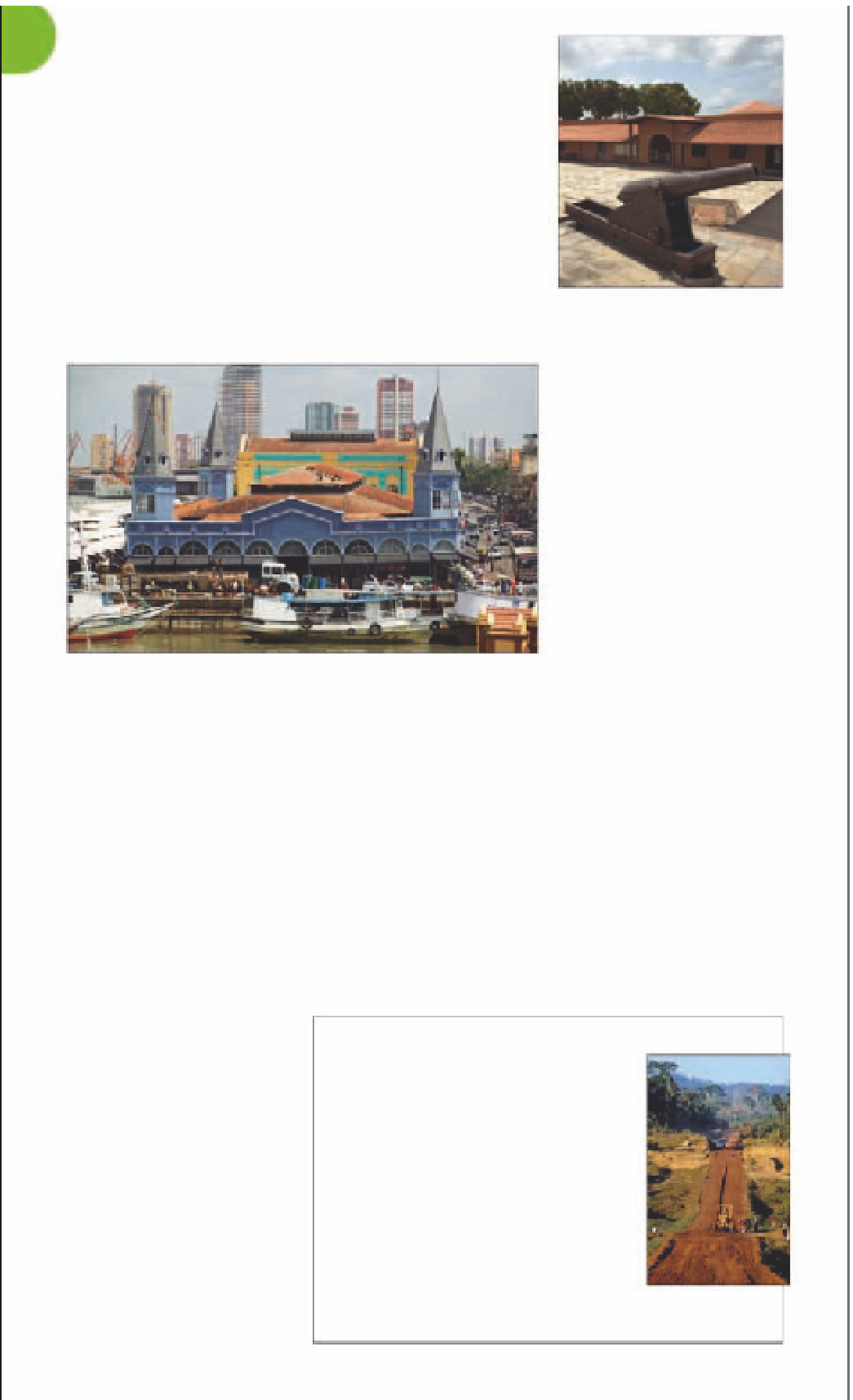Travel Reference
In-Depth Information
Belém
1
The attractive city of Belém was founded by the
Portuguese in 1616 to guard the mouth of the Amazon
river against other European powers. As the Amazon
region's resources, mainly spices, were exploited, the
city soon became a major trading port. It was ravaged
during the 1835 Cabanagem Rebellion, when the poor
settlers attacked the wealthy local elite. By the end of
the 19th century, Belém had more than recovered its
economic position, largely due to the rubber boom.
It is still the most important port in Northern Brazil,
and a fascinating place from which to explore the
wealth of colonial and republican architecture.
Cannon on display at the 17th-
century Forte do Castelo
by the Portuguese colonists in
1616. It was rebuilt six years
later, and again in 1878. It
now houses the Museu do
Encontro,a small historical
museum presenting the city's
history and the early conquest
of the Amazon.
P
Palácio Antônio Lemos
Praça Dom Pedro II.
Tel
(091) 3219
8217.
#
9am-6pm Tue-Fri,
9am-1pm Sat & Sun.
&
This splendid palace housed
the municipal authorities
between 1868 and 1883. It
still has offices for the
Prefeitura, but much of the
building is open to the public,
with some furnished period
rooms upstairs. The palace is
home to the Museu de Arte
de Belém, which houses a
fine collection of Brazilian
20th-century paintings.
Ships docked on the waterfront at the Ver o Peso market
=
Estaçáo das Docas
Blvd Castilho França, Campina.
Tel
(091) 3212 5525.
#
noon-midnight
daily.
www
.estacaodasdocas.com.br
Three former warehouses
overlooking the river have
been converted into a stylish,
air conditioned shopping,
dining, and entertainment
space. Visitors enjoy the lively
atmosphere until late at night.
flour) to medicinal herbs and
aromatic oils. The market
extends along the promenade
where there are further stalls
and kiosks selling craft goods
and local food specialties.
P
Forte do Castelo
Praça Frei Caetano Brandão 117,
Cidade Velha.
Tel
(091) 4009 8828.
#
10am-6pm Tue-Fri, 10am-8pm
Sat & Sun.
&
P
Teatro da Paz
Praça da República.
Tel
(091) 4009
8750.
#
9:30-11am, 12:30-
2:30pm & 4-5pm Tue-Fri; 9:30-
12:30pm Sat.
8
Sitting at the confluence of
Rio Guamá and the Baía do
Guajará, this fort was first
built of wood and mud plaster
(
Ver o Peso
Av Castilhos França.
#
6am-2pm daily.
Incredibly hectic early in the
morning, Ver o Peso, or “See
the Weight,” was originally
a colonial customs point
(Posto Fiscal), where goods
were assessed for taxation
purposes. These days, its
most obvious feature is the
iron-built fish market, the
Mercado de Ferro, which was
designed and made in
England and assembled here
in the late 19th century. The
variety of seafood inside is
staggering. Outside, the main
market expands into stalls
that sell everything from
jungle fruits and
farinha
(manioc, or cassava-root,
This grand Neo-Classical
opera house was built in
1878, along the very Parisian
TRANSAMAZÔNICA
Until the middle of the 20th century,
river boat or mule trail were the only
viable forms of travel across Amazônia
and Northern Brazil. With the ambitious
construction of Highway BR-230, during
the late 1960s, the Atlantic port of Belém
was effectively connected all the way
to the Peruvian border. Known as the
Transamazônica, this road is in a poor
state of repair along much of its length.
In 2005, a river bridge to Peru was
opened in the remote jungle state of
Acre, completing the Brazilian end of
the Transamazônica.
Unpaved section of
the Transamazônica
For hotels and restaurants in this region see p382 and p407



































